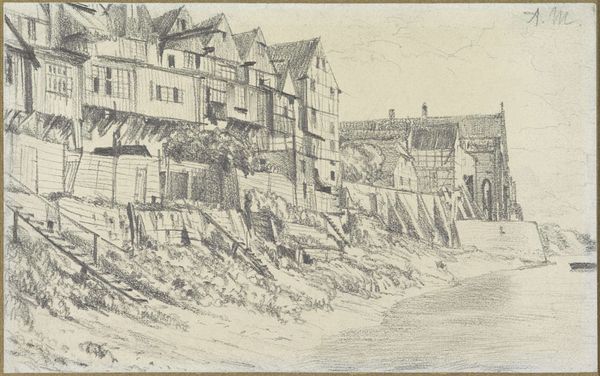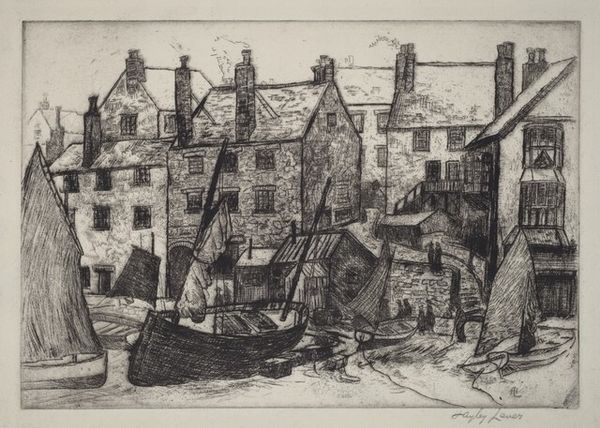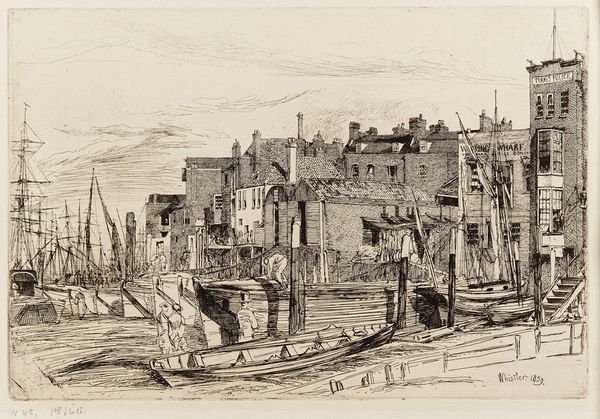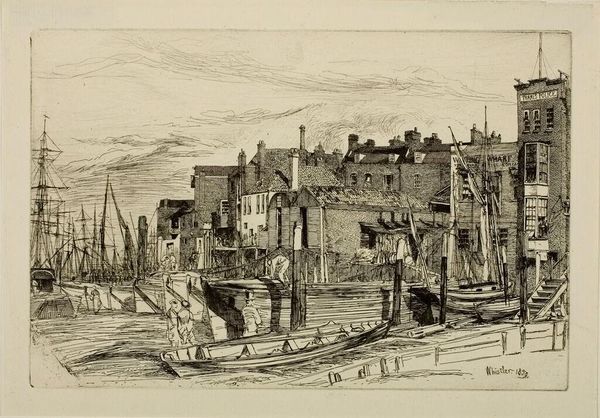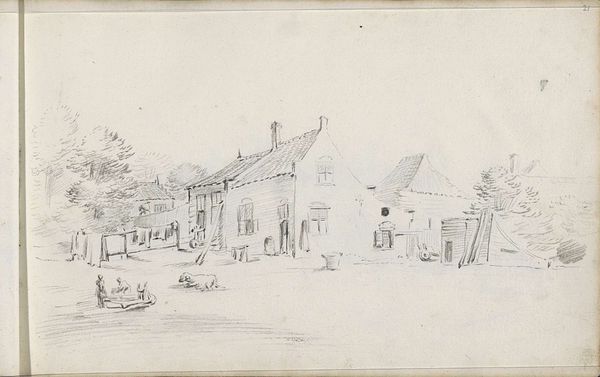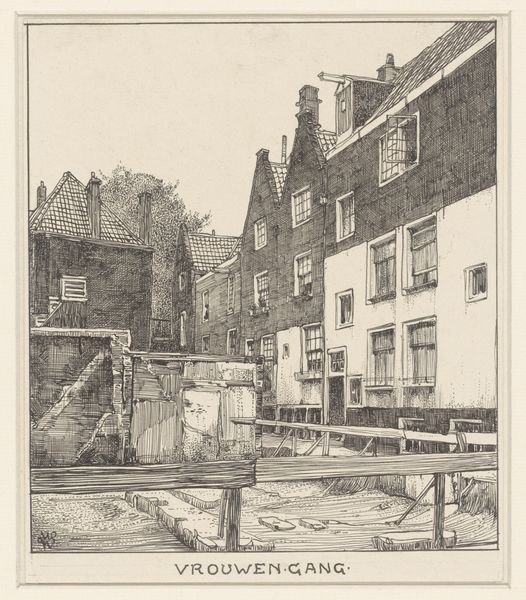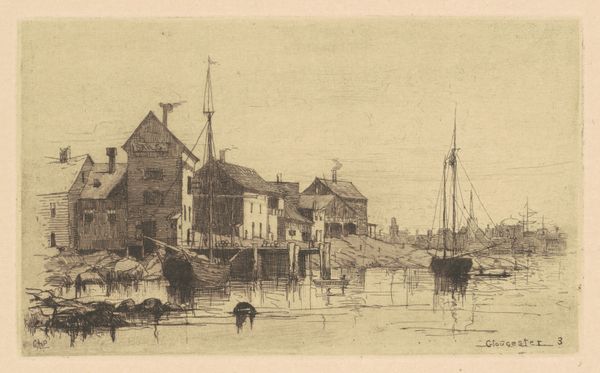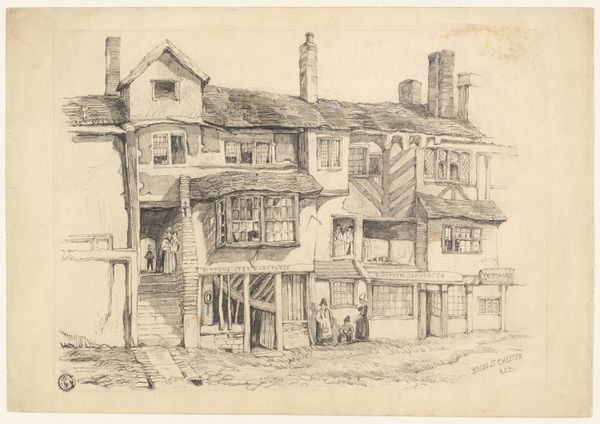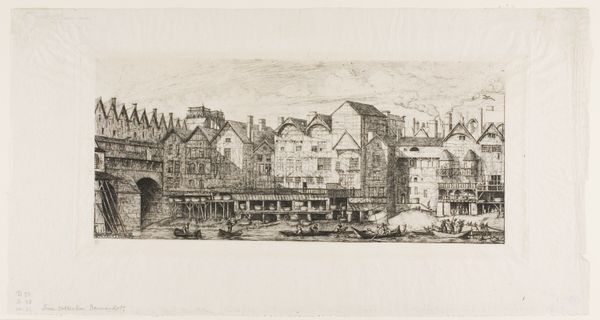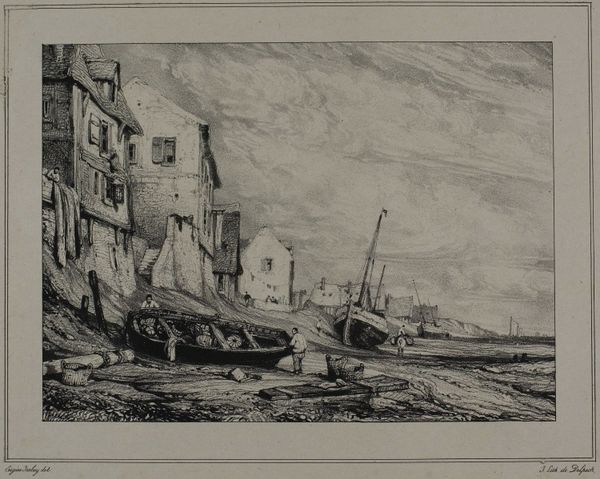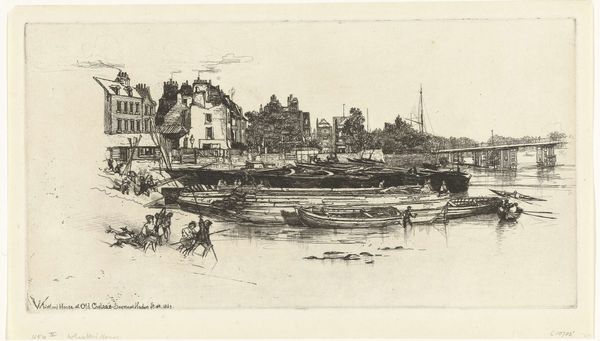
drawing, print, etching, pencil
#
drawing
# print
#
etching
#
landscape
#
pencil
#
cityscape
Copyright: Public Domain: Artvee
Editor: Here we have James Abbott McNeill Whistler's "The ‘Adam and Eve’, Old Chelsea," created in 1879. It's an etching, and the level of detail for a print is astonishing. It almost feels photographic in its realism, but also has an air of transience. What draws your eye when you look at this work? Curator: The density and distribution of the lines articulate form and space quite ingeniously, wouldn't you agree? Notice the artist's delicate use of hatching and cross-hatching to suggest depth and shadow. Whistler is not just rendering a scene but also investigating the possibilities within the etching medium itself. The boats, structures and the solitary figure seem merely to be his excuse to probe tone and line variation. Editor: Yes, it is masterful. I notice the buildings almost fade into each other; the only separation are those expertly placed lines. It's all about the forms, like you say. So how does Whistler manipulate space in this composition? Curator: By interweaving the foreground and background planes. See how the artist renders the boats in varying degrees of clarity to imply distance? The strategic blurring of elements creates a sense of atmospheric perspective that ultimately contributes to the flattening effect. What semiotic properties might such compression produce, in your opinion? Editor: That's interesting. It's like he's collapsing the traditional landscape into a more abstracted study of shapes. I guess this approach directs us away from trying to read narrative, and pushes us towards experiencing the visual sensations the work produces instead. Thanks for the insights! Curator: Indeed. Thinking about the materiality and manipulation of the medium helps us understand the artistry beyond just representation. A fascinating work by Whistler, showcasing technical skill, isn't it?
Comments
No comments
Be the first to comment and join the conversation on the ultimate creative platform.

